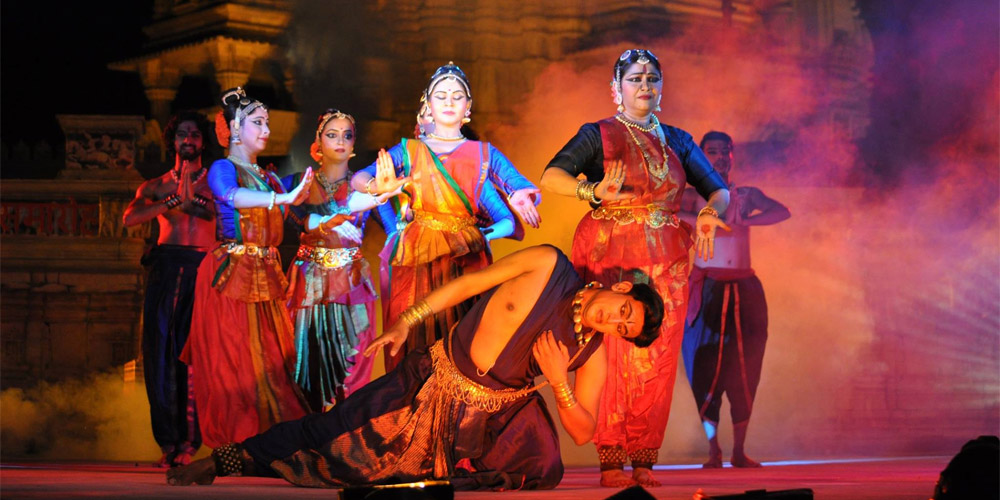It’s strange but true that what has engaged the curiosity of streams of tourists, filing past the stunning temples of Khajuraho in Madhya Pradesh, have been those colorful stories about its erotic sculptures. What’s also strange but true is that only 8-10 percent of these sculpted sensual depictions form part of the main body of sculptures that are the glory of these medieval shrines. And none of these are in the interiors. They can all be found lost amongst the various sculpted groupings on the exteriors!
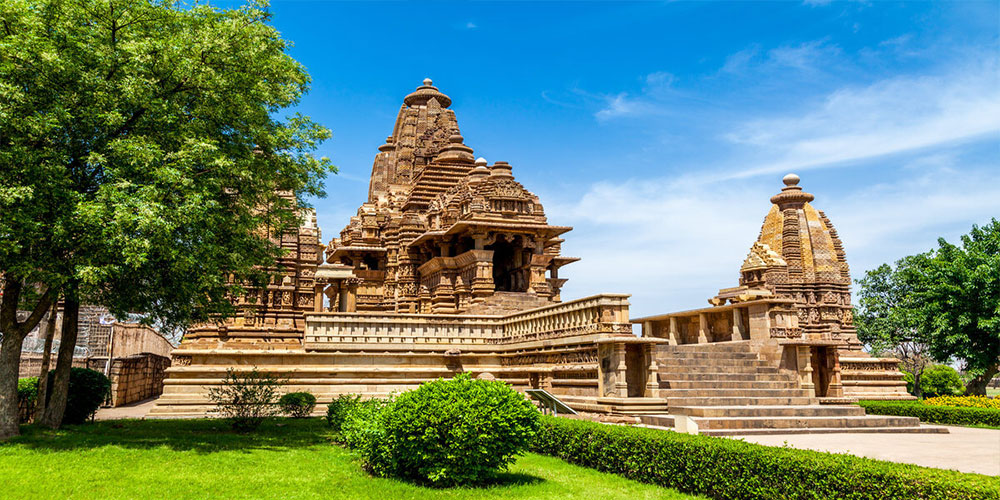
What comes as a big surprise for the visitor is that ‘the erotic love temples of Khajuraho’ showcase love-play in the most aesthetic yet highly sensuous form. There’s no vulgarity on display here in the congress of the life-size sculpted figures with their partners. Rather, what amazes the beholder is how each statute draws attention to the exquisite obsession with the eye to fine detail and artistic perfection.
It comes through with great clarity that the mighty Chandelas, the builders of these stunning temples with their frank sexual friezes, didn’t commission them as an overt display of erotic naughtiness, to give people cheap thrills. The intent was to show a celebration of the entire gamut of a relationship between a man and woman in all its warmth and sensuous frankness.
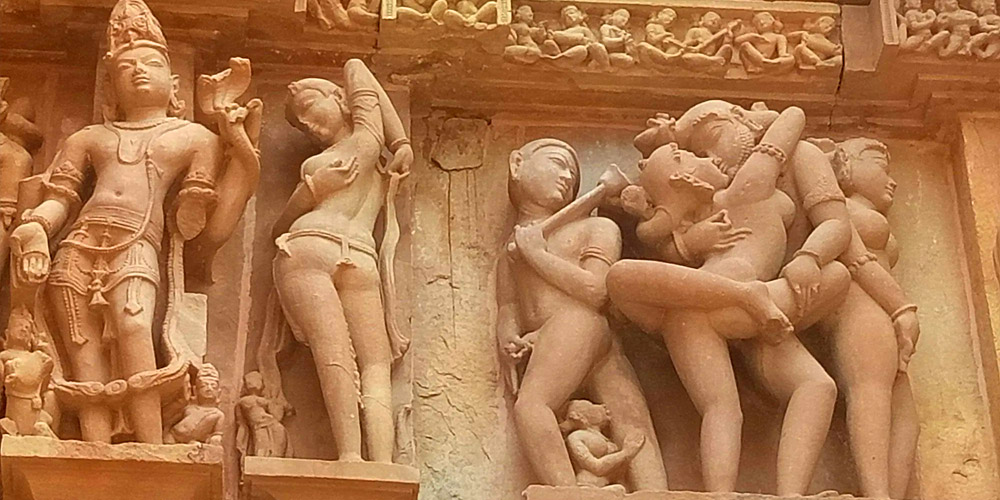
The Khujuraho temples, built between 885 CE and 1000 CE, form a seamless depiction of the engagement of this sensual subject between the artist and the viewer. Love in the times of the Chandelas, they tell us, was a celebration of the highest form of physical, mental, and spiritual unity between the two partners. The sculpted marvels set the standards high in artistic mastery as we discover the many moods of a woman who is confident in her sexuality— and so we see her— reflective, sensual, playful, vain, and vivacious. At the outset, the viewer would do well to understand that this is an abandoned display of pornography; rather they reflect a deeper more cohesive understanding of the Hindu theory that when all the senses are allowed to give rein to one’s feelings, there is a total union, physically and mentally, arrived at through lovemaking.
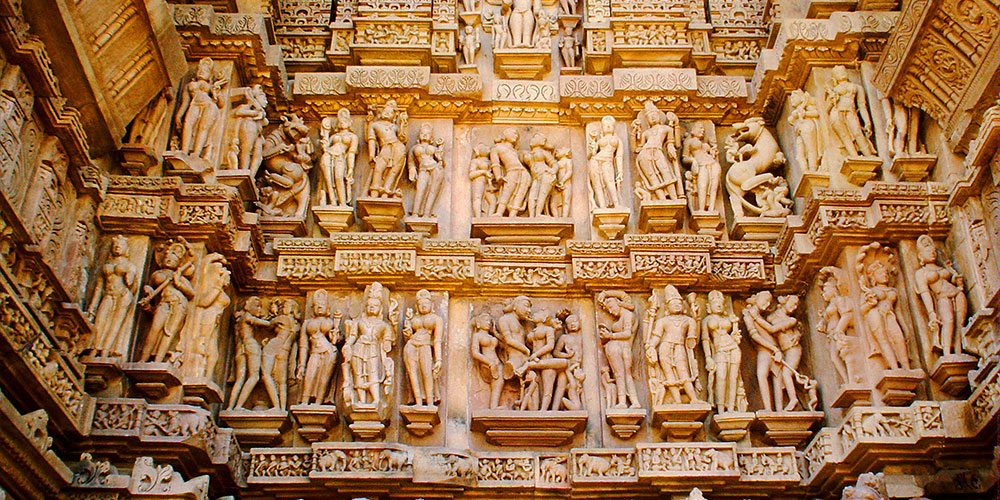
Living museum of art captive in the jungles
At the heart of the Khajuraho experience is the allurement of the temples which depict erotica in various forms. But before we get to that, one must be reminded that this entire complex was lost over time in the clutches of a thick jungle. This group of Hindu and Jain temples, scattered over a sprawl of over 20 sq km, was discovered for the public at large only by chance in dense forests in Chhatarpur district, Madhya Pradesh. The discovery was made in 1838 when British engineer Captain T.S. Burt was led by Hindu locals to the area after which he filed a report in the Asiatic Society Journal of Bengal. As observed by the notable Raj-era archaeological surveyor Alexander Cunningham, these temples were secretly in use by yogis and attracted local devotees during Shivaratri celebrated annually in February/March.
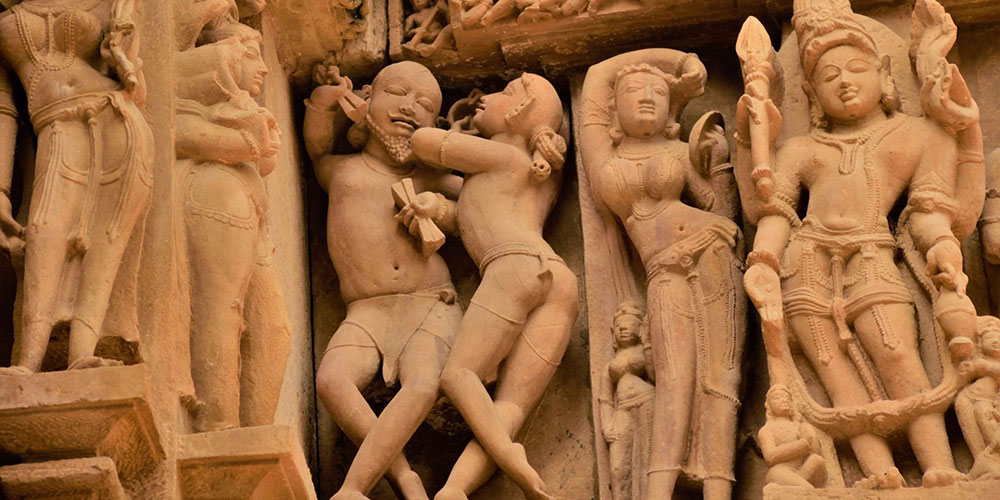
Of the original 85 shrines, only 25 now remain. Dedicated to Shiva, Vishnu, and the Jain Tirthankaras the temples, built in Nagara-style in red sandstone, are now a UNESCO-acclaimed World Heritage Site for their outstanding architecture, diversity of temple forms, and as a testimony to the Chandela civilization.
Chandela rule was brought to an end by the 13th century with the invasion of the army of the Delhi Sultanate headed by Muslim Sultan Qutb-ud-din Aibak. With Muslim rule extended in the region between the 13th and 18th centuries a few of the temples were desecrated and eventually fell into neglect. Luckily their remoteness protected them from the avarice and religious zeal of the Muslim warriors.
The Love Temples
The two major spots to appease your curiosity are the Western Group and the Eastern group of temples.
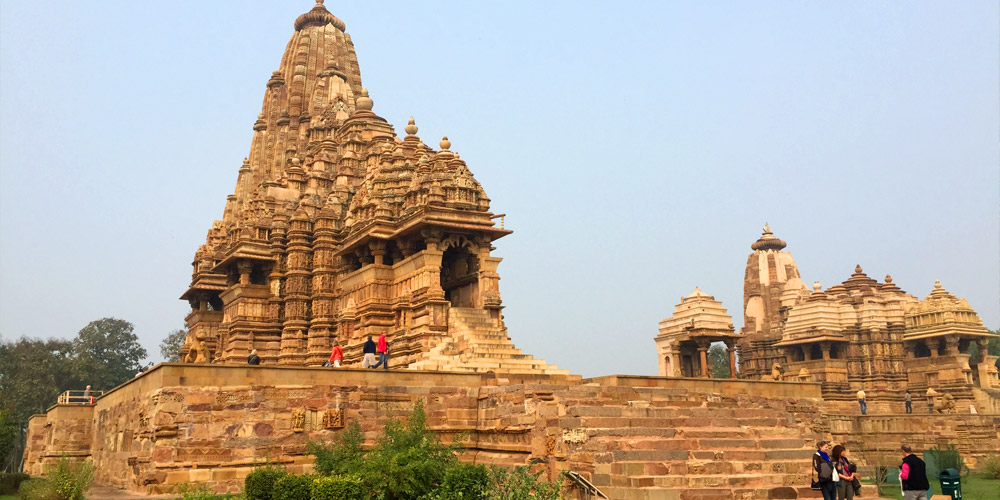
The early Lakshmana temple offers vignettes of soldiers on campaign, partying with apsaras on coming home, and ladies in varying states of getting ready for a bath, drying their hair, checking out the mirror, acting coy, making love. The Kandariaya-Mahadev, the largest and tallest temple is dedicated to Lord Shiva. Built in the reign of King Vidyadhara its inner and exterior surfaces are covered with over 800 sculptures of gods, goddesses, musicians, and erotic visuals. About 90 percent of the artwork at the temple depicts scenes from daily life and symbolic values in ancient Indian culture. In the inner sanctum is enshrined a massive marble Linga. Visitors tend to linger longer near its northern and southern facades for their erotic friezes. The temple reflects some of the most sublime depictions of architecture and sculpture that the Chandela’s came to be known for. The nearby Devi Jagdambi Temple is also know for its erotic sculptures.
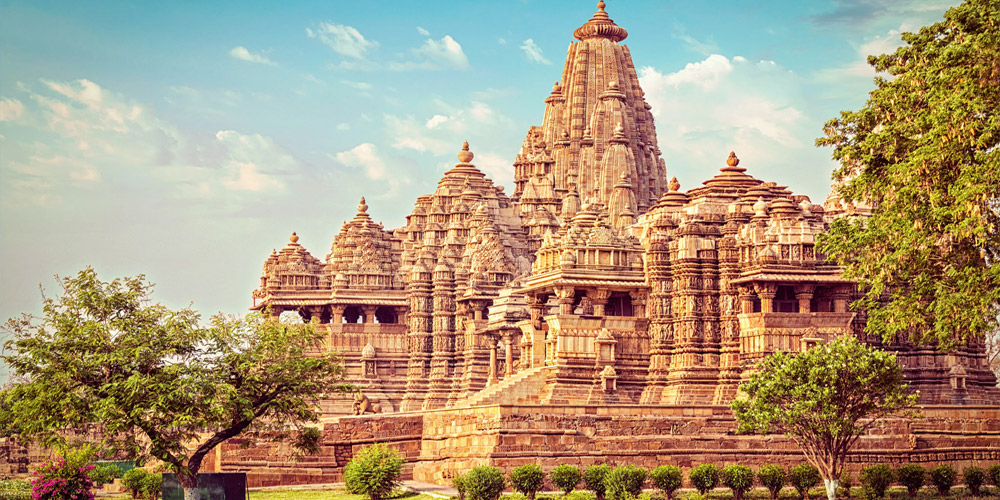
The largest surviving Vaishnava group includes the Chaturbhuja and Ramachandra temples.
Today the annual Shivratri festival draws thousands of devotees to Khajuraho’s only living temple, the Matangeshwar Mandir. The temples are open from dawn to dusk. The nightly Sound and Light Show with the backdrop of the temples is done beautifully.
A big draw annually is the Khajuraho Dance Festival is held in March and staged in front of the Chitragupta Temple and Vishwanath Temple at the temple complex.
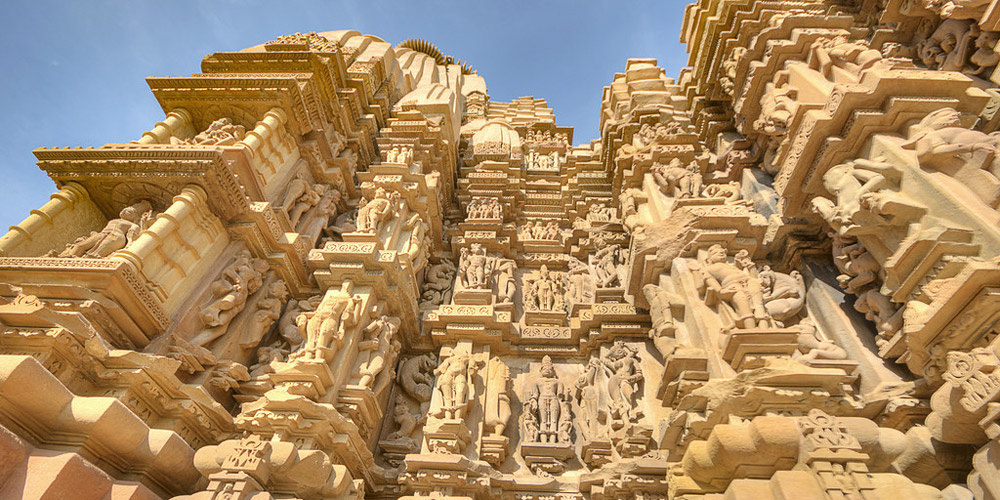
The fabulous banquet of artistic splendor can be quite overwhelming at first sight. You need more than a day to get the most out of a visit here. Pick up a booklet to follow what’s what at the Western Group gateway. What’s even better is to engage the services of a smart guide. Don’t be surprised to find you’ll need plenty of repeat visits to enjoy the full gamut of the showcase of this fabulous living museum of art and architecture.
